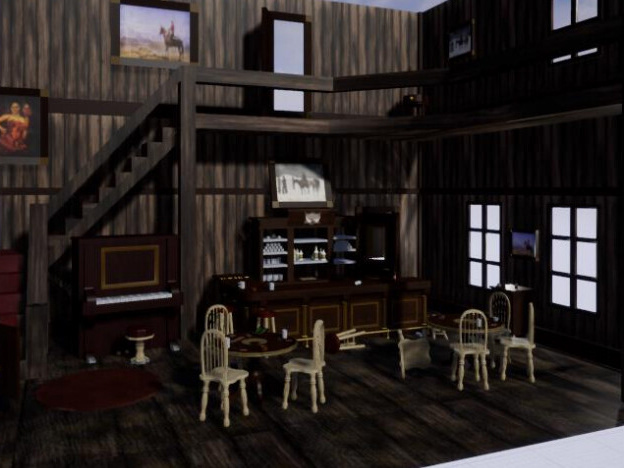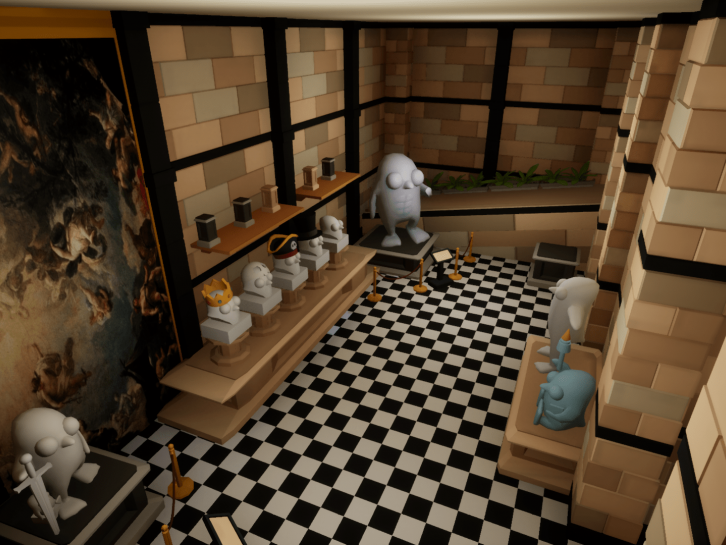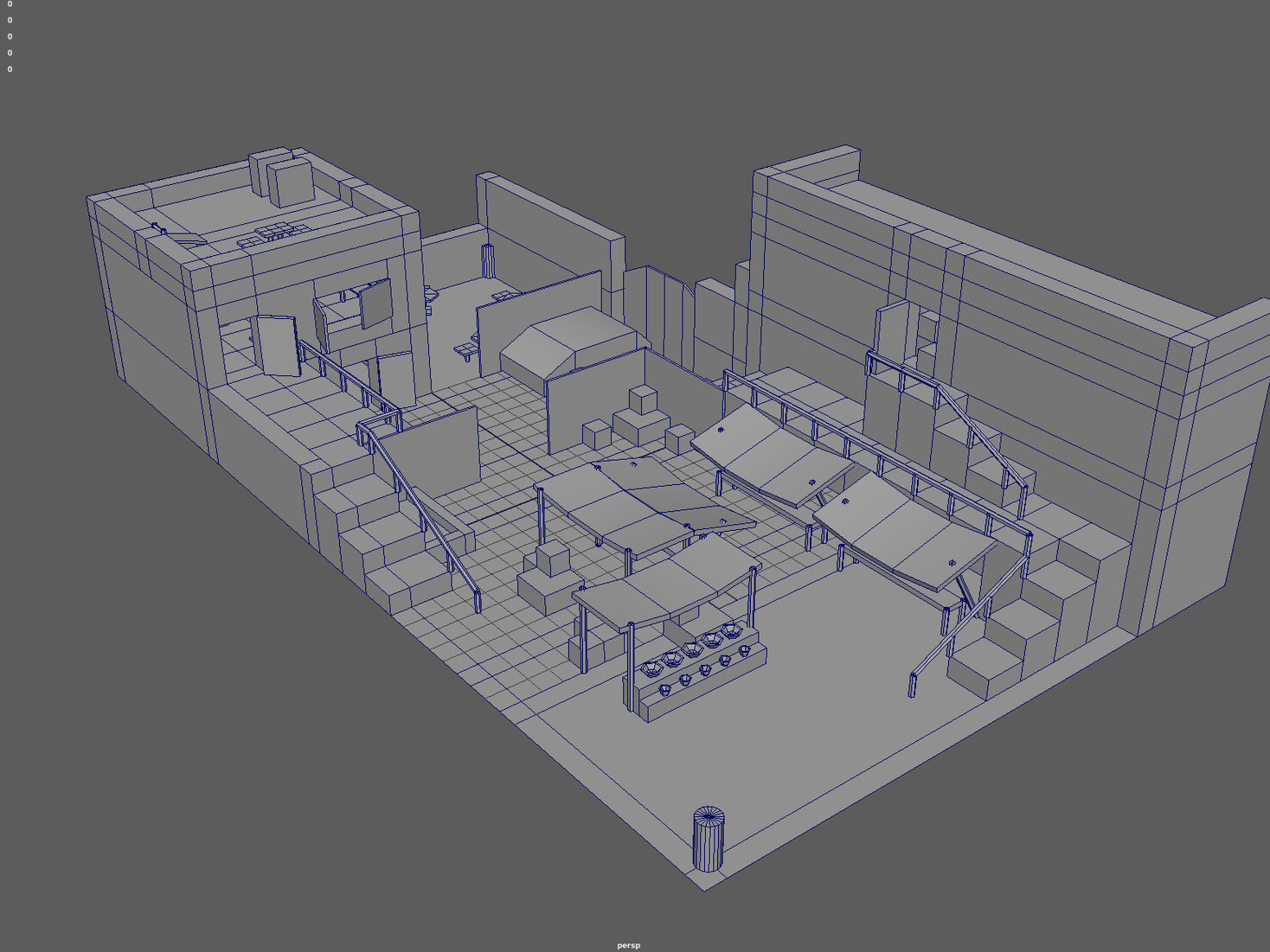Study Purpose
This study was an investigation into how level design can be used to combat camping within shooters.
The study examined locations within multiplayer shooter titles where player often camp and analyzed what encourages that tactic.
The study then aimed to produce a level design which could promoted an anti-camping composition and flow.
Defining a Camping Location
This project aimed to investigate level design tactics which could be used to reduce camping within first person shooter multiplayer matches.
The project was designed with the player mechanics of Call of Duty in mind.
I researched what made a location within a map appealing to players who camp. I looked at maps which were commonly discussed amongst FPS communities for players camping. Once a short list was created I looked into the specific spots players camped in, and what factors each of those locations held which incentivized camping.
The key factors were often a singular entry point, blind spots to disadvantage attacking players, defensive half cover, line of sight on all entrances, a walled and roofed space with comprehensive protection, and acute angled positions to wedge oneself within.
Design Solutions to Static Players
To promote continual movement I designed solutions counter to the level elements which promoted camping. I did this by including multiple obscured points of entry, line of sight breaking cover objects of various heights, verticality, overlapping lines of sight, overlapping optimum routes, and objective placement within kill boxes.
The design aims expanded during production to include a constant level of threat regardless of the player's location within the map.
To achieve this I had to balance choke points, introduce verticality for undetected map navigation, utilize half cover to slow timings on specific routes, create over lapping lines of fire on objective points, focus on multi-angled entry points in each room, and introduce kill boxes where player routes would overlap.
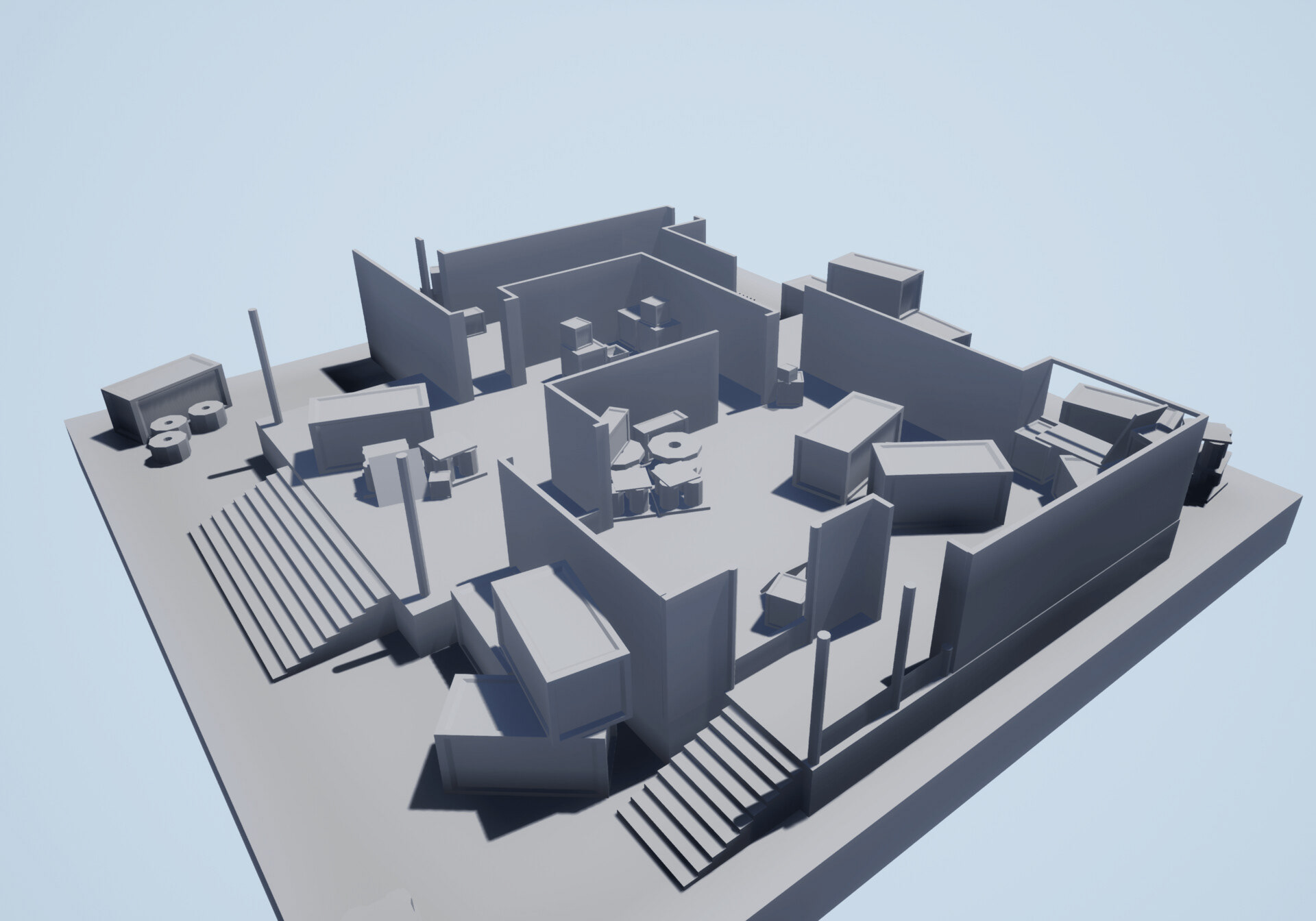

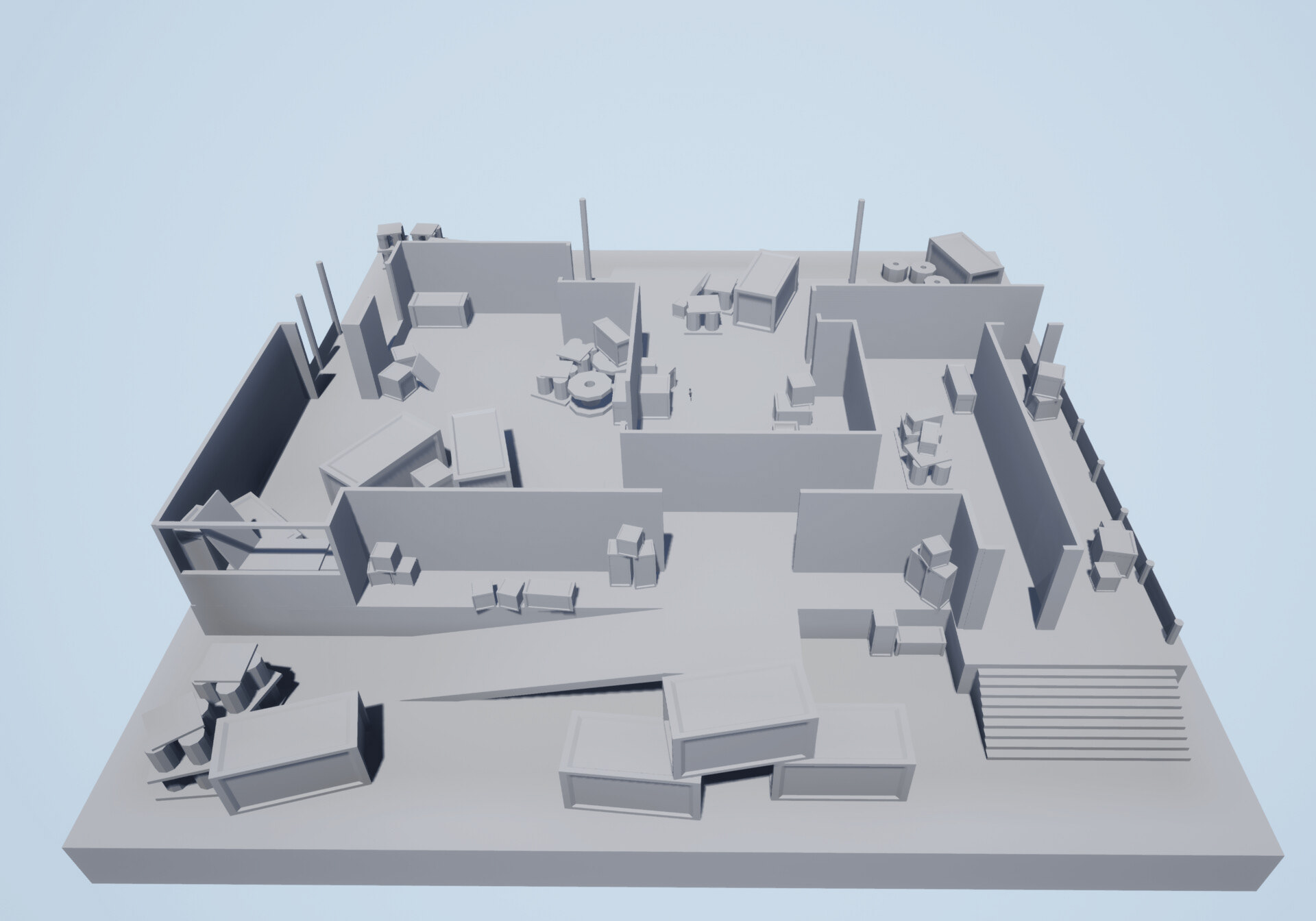
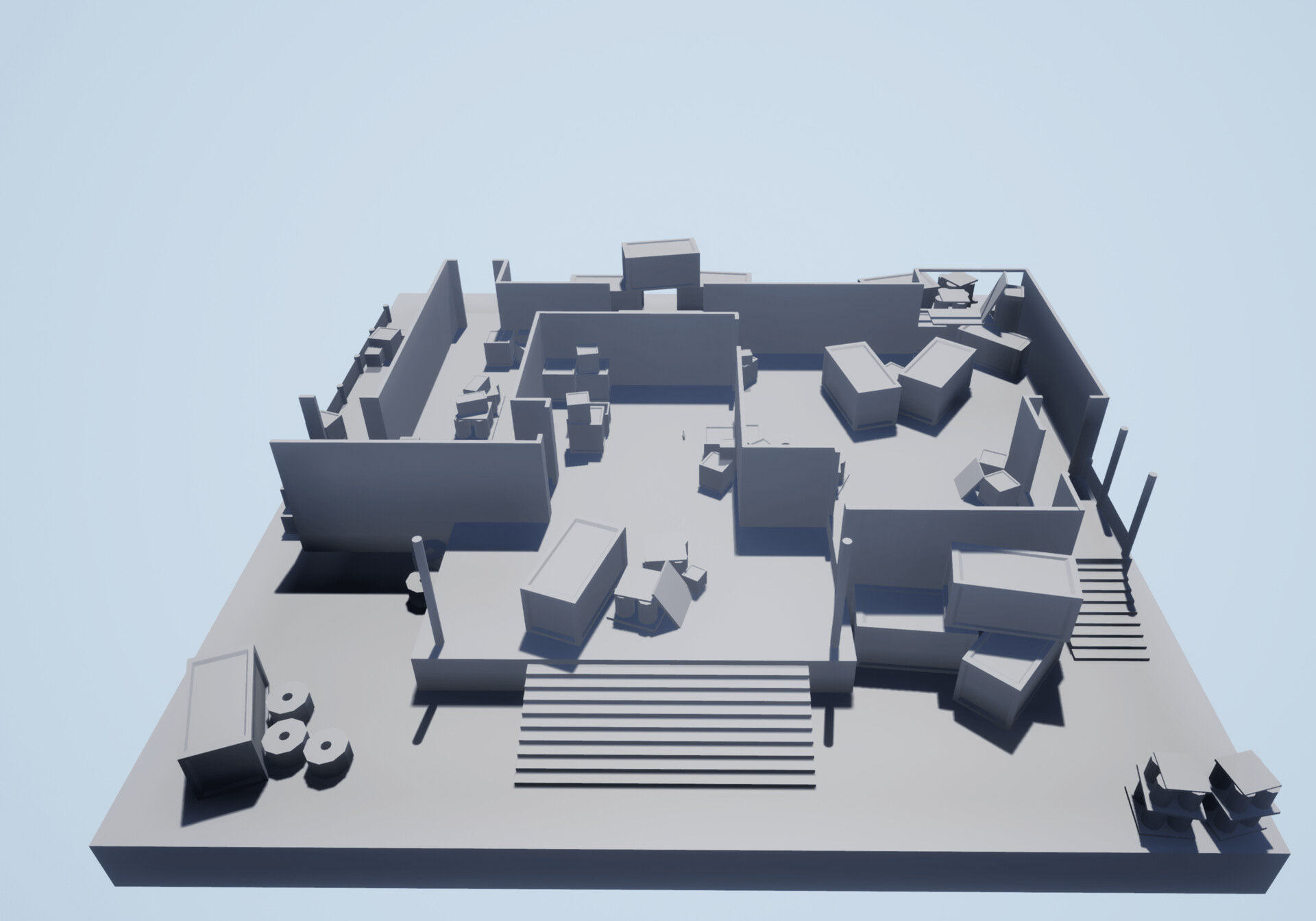

Introducing Verticality
Scalable routes were added to jump, or mantle over, to access areas of vertical advantage.
Within these scalable locations there was a consideration made to the direction players would be facing to use the route. Each route aimed to have players face into the object they were scaling so that they would be blind to threats at their rear. This added a sense of risk versus reward for players who wanted to gain a height advantage over others.
Once areas of vertical change had been expanded I reviewed the routes players would take around the map based upon spawning and objective locations . These spawns and objectives can be seen in the top down map at the foot of this post.
Navigation Timing
I plotted possible routes platers would take to reach each objective. I time these routes to establish the most probable points of conflict. Once these locations were established I created kill boxes on each point.
I reworked the map to create slower but safer routes around the map to promote flanking. These flanks would stop players camping on the edge of kill zones.
Line of Sight Testing
To promote continual movement of players I added line of sight breaking cover and edited the architecture within each route around the map. This would create a cat and mouse between players and stop static gameplay by allowing plenty options for players to get the drop on another mid gun fight.
Once these locations were edited I added dummy enemies to the level and tested my own lines of sight as a player. This testing highlighted unintended points of advantage due to broad lines of sight. These locations had their vision reduced through further map iterations to stop them becoming areas which players could anchor themselves within.
Interior Entry Point Iterations
I test ran the map repeatedly with dummy enemies in various layouts. This highlighted that the interior space was heavily weighted toward the Spawn A team as they had continual forward motion where Spawn B had to double back on themselves.
To amend this I altered the interior layout to split up the routes which each team could take and offer Spawn B team more options to get the drop on a harsh first push from Spawn A players and avoid them being able to lock down the interior space as a team and cooperatively camp.
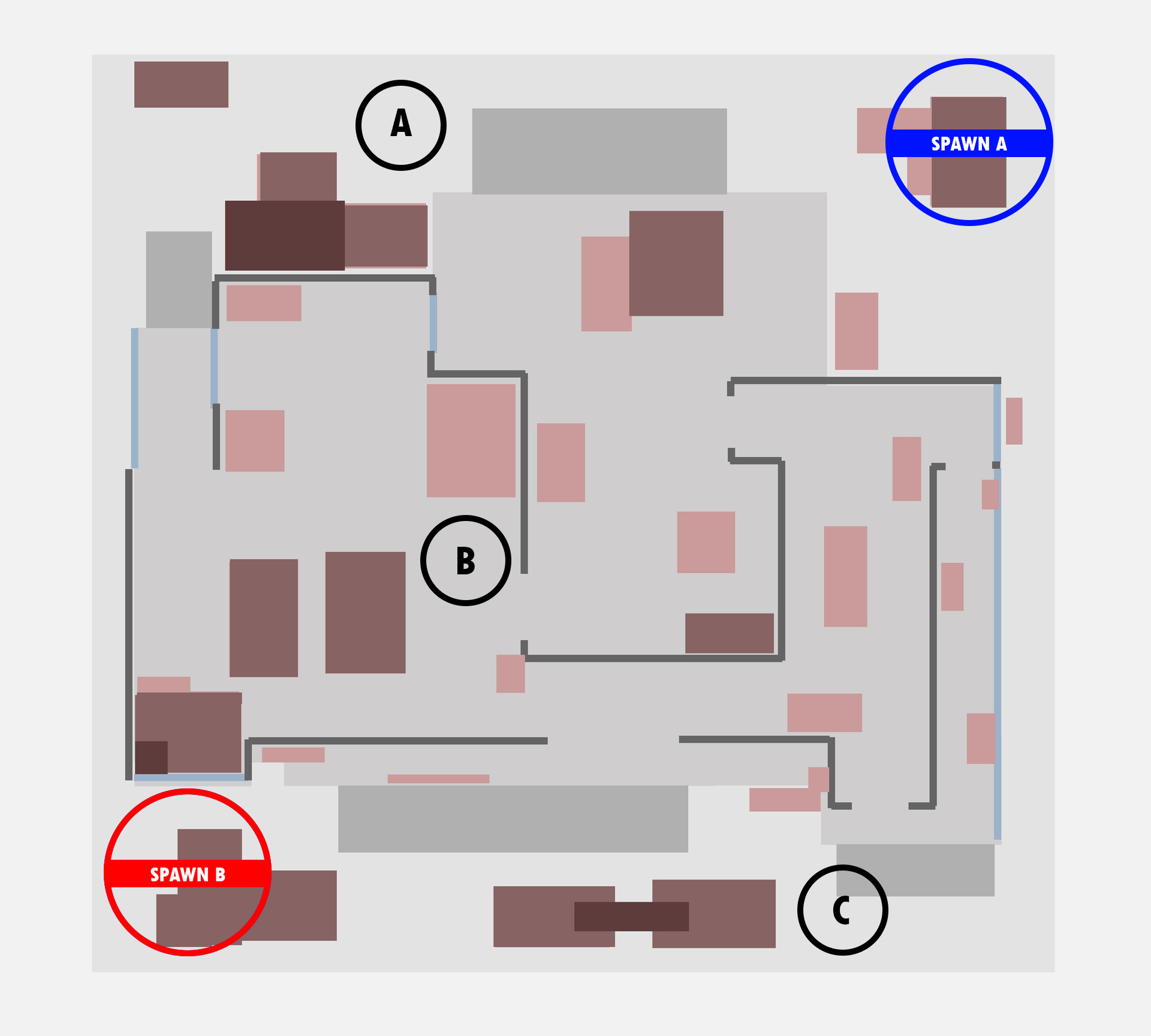
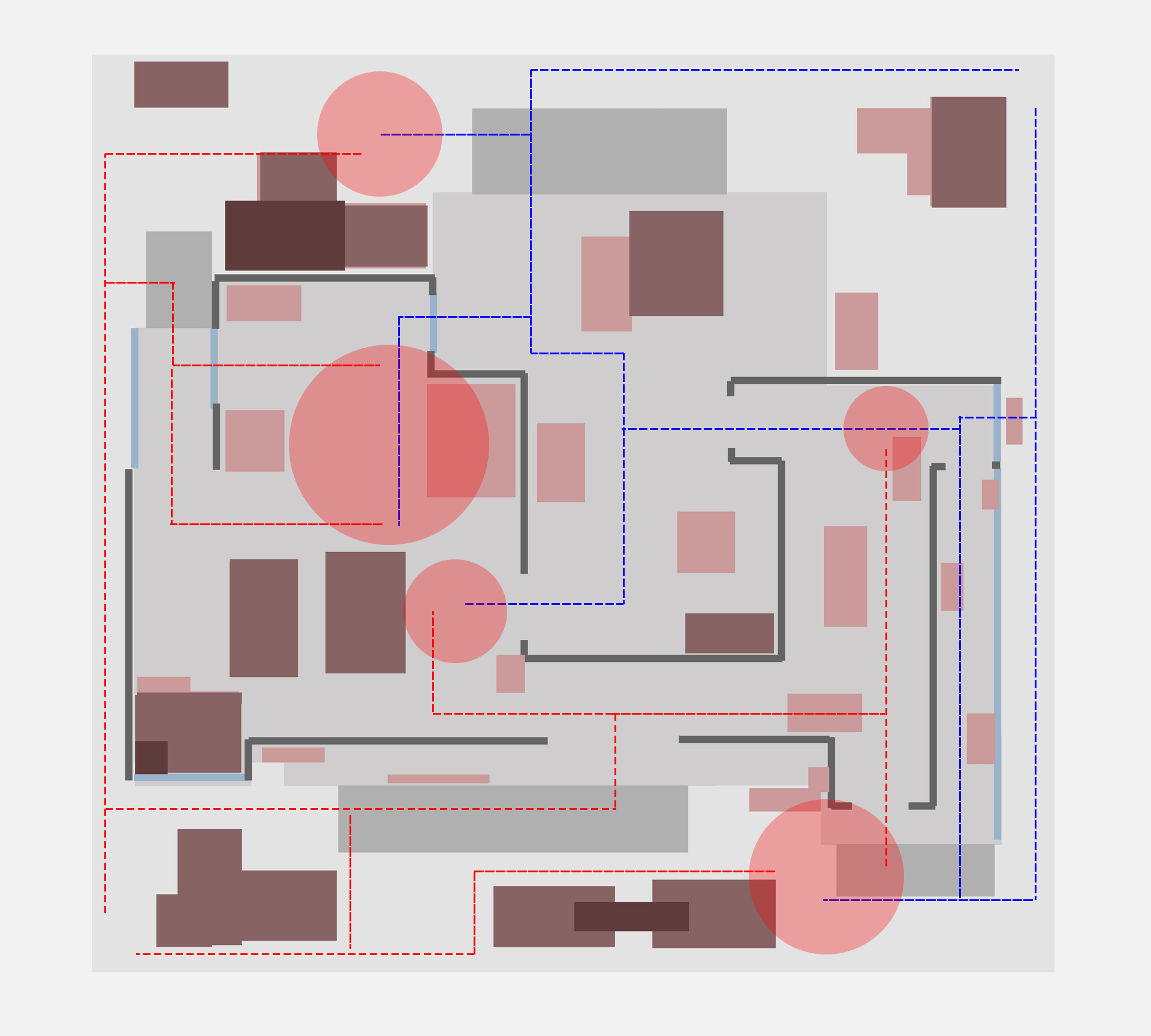
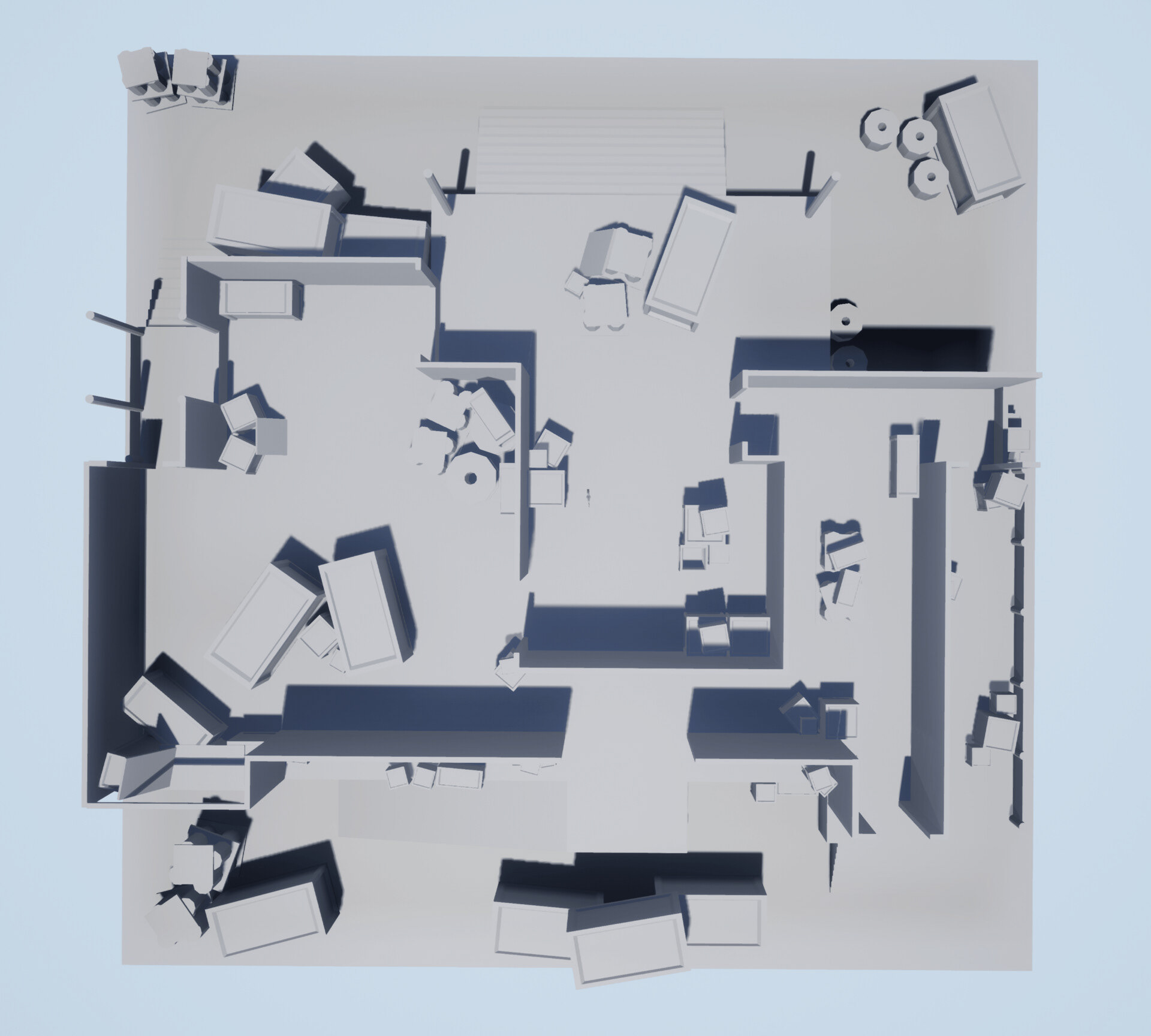
Project Evaluation
The evaluation on this project focusses on areas of expansion and how they could add further benefits to the level as an FPS map as well as how this expansion could better meet the project aims.
The project level is small scale and due to this would create continual combat in the common 6 vs 6 player match count. Although this continual combat blocks players from camping further it also promotes cautious play to avoid high death rates in players.
To counter this the map could expand the exterior area, add subterranean routes into the main building or between the spawn areas, and add an upper floor to the main building.
Expanding the exterior location would allow for further routes players could take to break line of sight This would force continual aggressive play whilst alleviating a situation of constant combat. It could also introduce a more tactically appealing breadth of weapon choices in the player base, further diversifying the means of engaging with, and responding to, the threats of an enemy team.
A subterranean route would give players an additional means of outmaneuvering one another. Exit points from this route could be placed almost anywhere as a response to unidentified camping locations within the current layout.
An upper floor would meet the study's needs as well. If the upper floor was designed with multiple stair ways for entry, and scalable entrances, it would avoid becoming a camping location through height advantage.
Adding this upper floor would add further design considerations on how extreme high ground is handled in line with player camping. The floor would have to be designed with consideration to the lines of sight into and out of the area, and creating routes into the floor that could not be bottle necked.
A draw back of the design that would require further testing is the event of players camping in pairs or teams. The layout was designed with the idea in mind that every player was independent of their team, and that all players were playing the objectives at all times. To test this efficiently the level would need testing with real teams either in engine, or through re-creation via an in game level editor in an FPS title.
